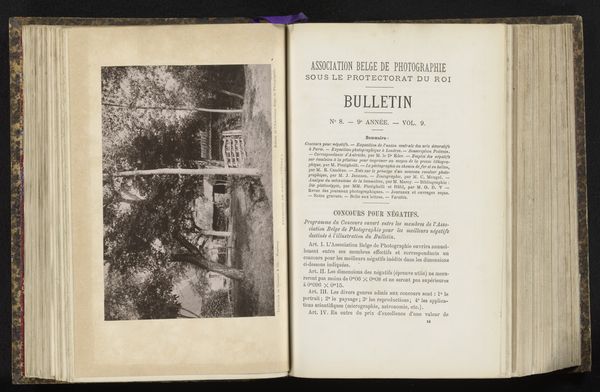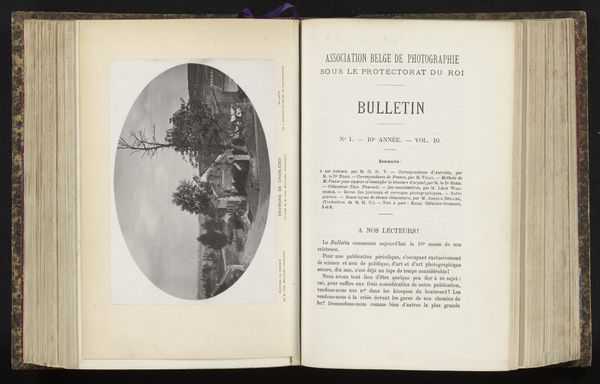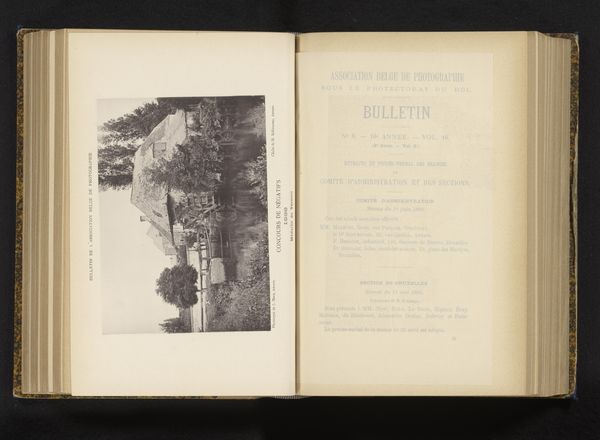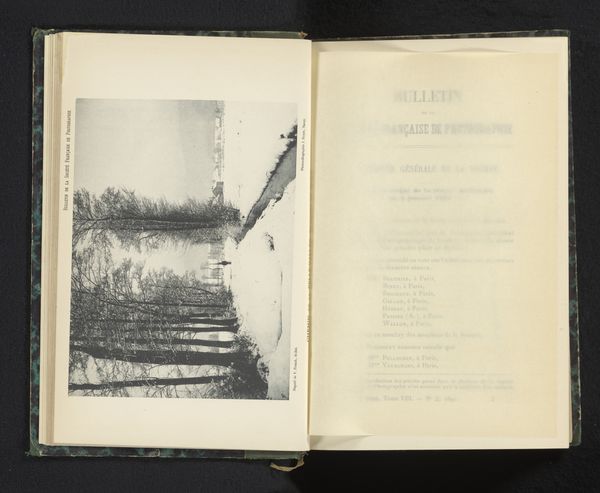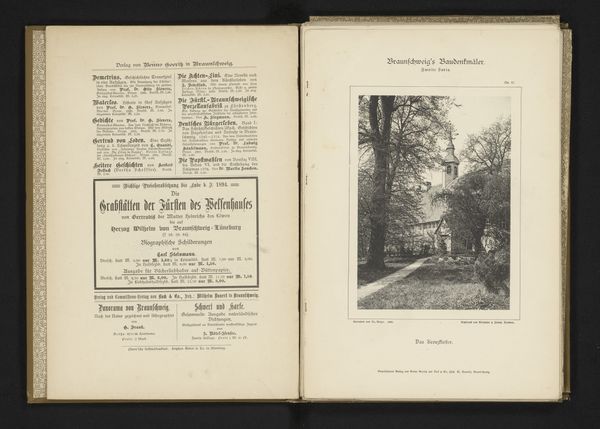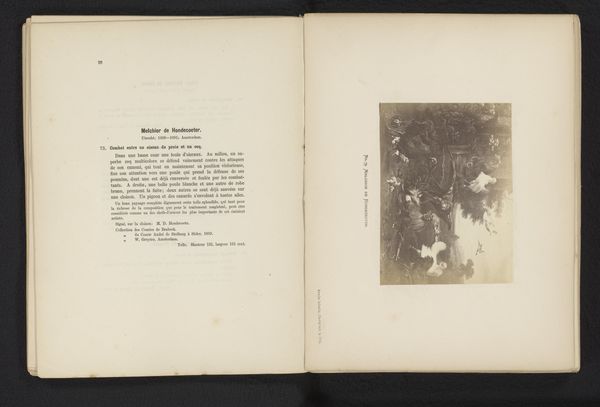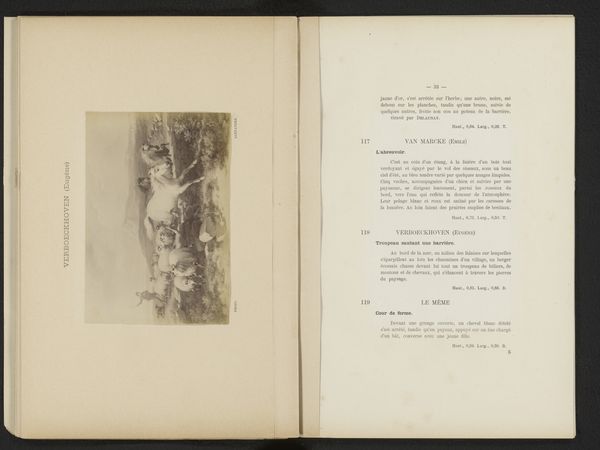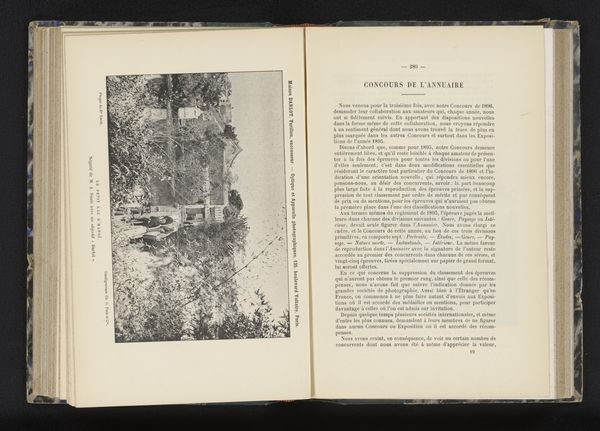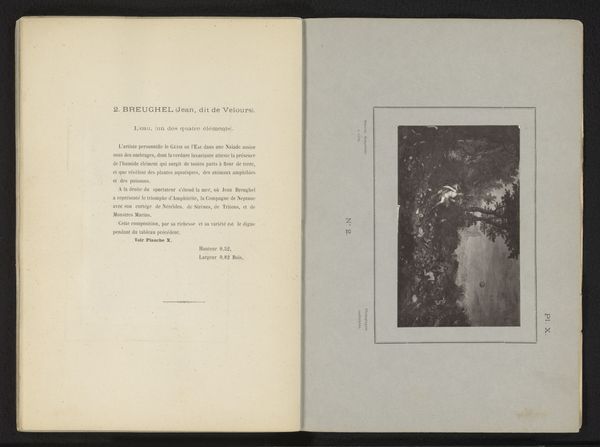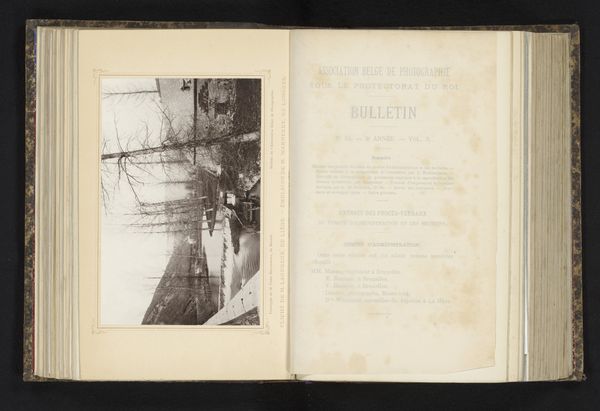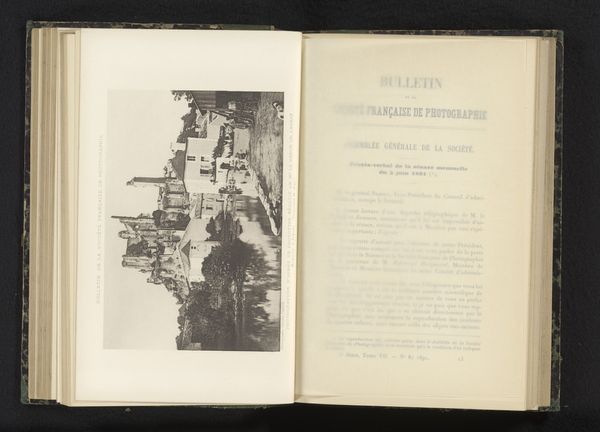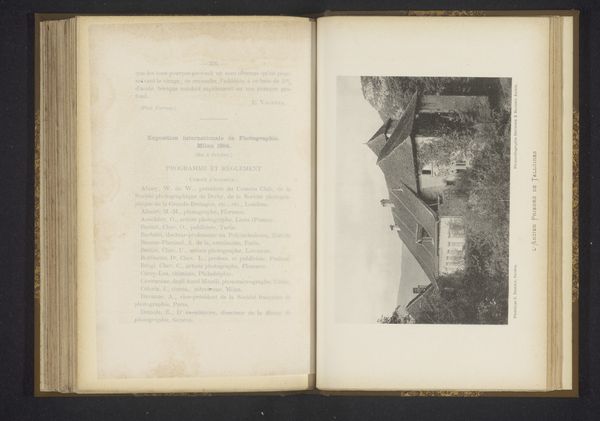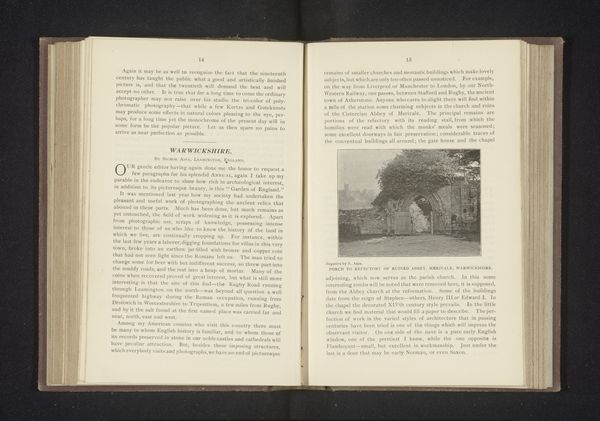
print, photography, gelatin-silver-print
#
portrait
# print
#
landscape
#
photography
#
gelatin-silver-print
#
modernism
Dimensions: height 108 mm, width 157 mm
Copyright: Rijks Museum: Open Domain
Curator: I find this gelatin-silver print, titled “Gezicht op een huis”, attributed to Sir William de Wiveleslie Abney and created before 1883, remarkably compelling. The way the house seems to emerge from the landscape… Editor: Yes, there's something haunting about that composition, isn't there? The dark foliage framing the almost ghostly image of the building. The limited grayscale also really enhances the drama, giving it a real sense of solitude. Curator: For me, it speaks to the Victorian obsession with capturing the everyday. Abney's choice of the gelatin-silver process offers a clarity that was revolutionary at the time, opening photographic practices to a wider circle of practitioners, due to it's lower costs, which changed the labour dynamics. Editor: I'm drawn to the geometric tension: the sharp angles of the roof against the softer, more organic forms of the trees. There’s almost a Cubist quality about it, though of course, that movement came later. Curator: It could perhaps be read as a quiet commentary on domesticity, and its place within industrialised Victorian society; it shows how technologies of representation shift social meanings. This photographic album format suggests a deliberate choice to disseminate the images, and knowledge, of photography itself within certain circles. Editor: Precisely! And the framing of the image—its relation to the landscape—feels intentional. It's not merely a document, but a carefully constructed image; the house acts as almost the anchor point of the image composition, drawing the eye up to a cloudy sky which, of course, wasn't accidental on Abney's behalf. Curator: Absolutely. Abney wasn't just taking pictures; he was participating in a visual language rooted in industrial shifts. Editor: It certainly makes you think about how the artist manipulates light and shadow to emphasize specific shapes, especially focusing on how photography changed from something only the most wealthy could undertake to something increasingly part of general production of images. Curator: I agree, the intersections are fascinating. Editor: Indeed; looking closely changes everything!
Comments
No comments
Be the first to comment and join the conversation on the ultimate creative platform.
